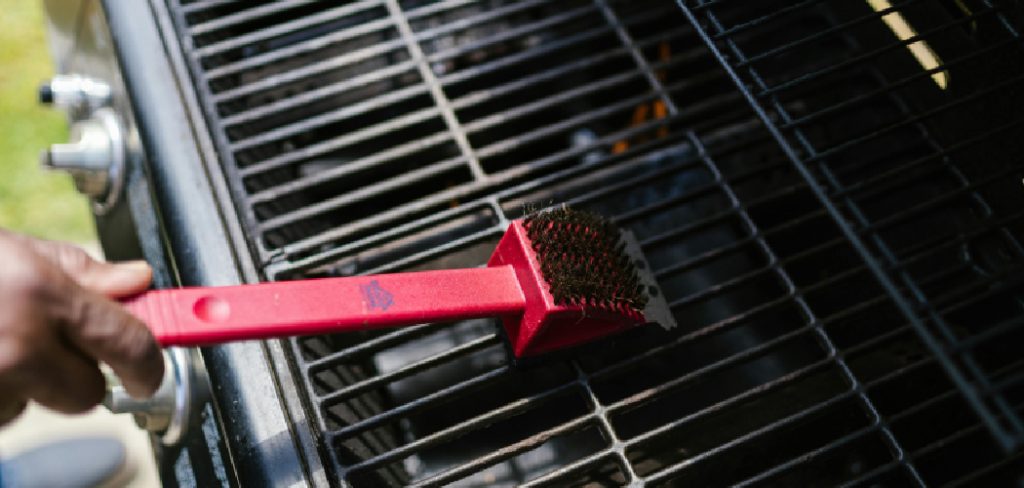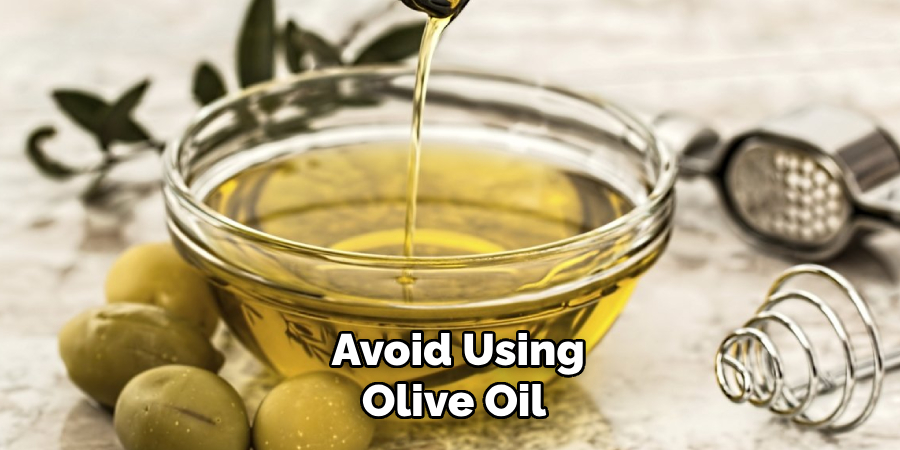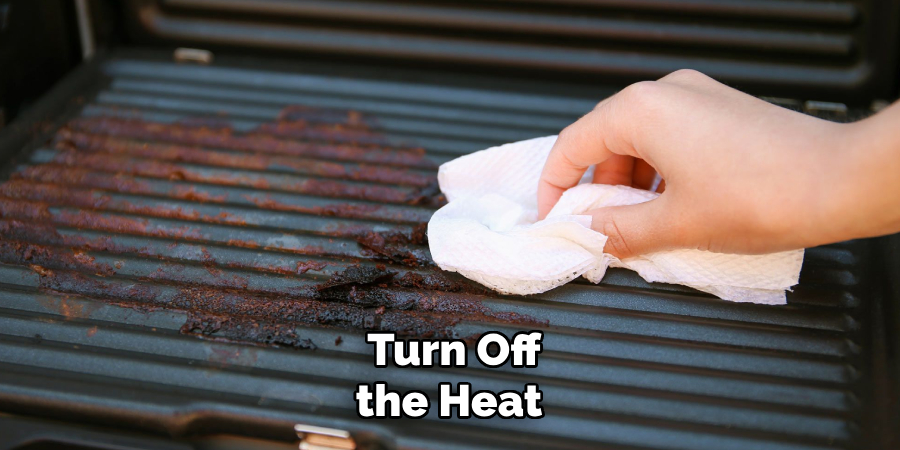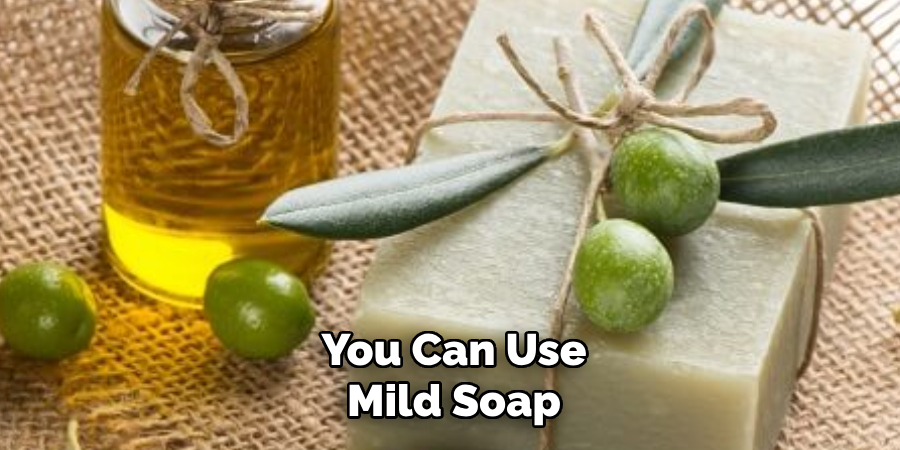When it comes to grilling, maintaining your equipment is key to achieving that perfect sear. Seasoning stainless steel grill grates not only helps to prevent food from sticking but also enhances the flavor of whatever you are cooking. Unlike cast iron, stainless steel requires a slightly different approach due to its resistance to corrosion and rust.
Fortunately, with the right techniques and a little bit of preparation, you can easily season your stainless steel grill grates to ensure optimal grilling performance and longevity.

In this guide on how to season stainless steel grill grates, we will walk you through the simple steps necessary to achieve a well-seasoned grilling surface.
Why Season Stainless Steel Grill Grates?
Before we dive into the process of seasoning, let’s understand why it is important to season your stainless steel grill grates.
Prevents Food From Sticking
One of the main reasons for seasoning stainless steel grill grates is to prevent food from sticking. This is especially helpful when grilling delicate foods like fish or vegetables that are prone to breaking apart. A well-seasoned grill grate will create a natural, non-stick surface, making it easier to flip and remove food without any hassle.
Enhances Flavor
Seasoning also enhances the flavor of your food by creating a caramelized crust. Seasoning creates a layer of oil on the grates, which helps brown it and adds a delicious charred flavor to your food.
Protects Against Rust
Stainless steel is known for its durability, but that doesn’t mean it’s invincible. Exposure to moisture or high heat can cause rust and corrosion over time. Seasoning forms a protective barrier on the surface of the grill grates, preventing them from coming into direct contact with moisture and extending their lifespan.
8 Steps on How to Season Stainless Steel Grill Grates
Step 1: Clean Your Grill Grates
Before seasoning your stainless steel grill grates, it’s essential to start with a clean surface. Begin by heating the grill on high for about 10-15 minutes. This will help to loosen any residue from previous grilling sessions. Once heated, use a stiff wire brush or a grill cleaning tool to scrub the grates thoroughly, removing all the leftover debris and charred bits.
This step ensures that the layer of oil applied during the seasoning process adheres directly to the metal, providing an even coating and enhancing the effectiveness of the seasoning. After cleaning, allow the grates to cool slightly before proceeding to the next step.
Step 2: Choose Your Oil
For seasoning, it’s essential to choose an oil with a high smoke point that can withstand the high temperatures of grilling. Some good options include vegetable oil, grapeseed oil, or canola oil. Avoid using olive oil as its low smoke point can cause it to break down and create a sticky residue on your grill grates.

You will also need a clean cloth or paper towel to apply the oil onto the grates. The cloth should be slightly damp but not dripping water.
Step 3: Apply Oil to the Grates
Once your grill grates are clean and slightly cooled, it’s time to apply the oil. Dip your clean cloth in the oil of your choice and rub it onto the surface of the grates. Make sure to coat all areas evenly without leaving any spots untouched.
Avoid using too much oil as it can create a thick layer that can become sticky during cooking. A light coating is sufficient for seasoning purposes.
Step 4: Heat Up Your Grill
Now that your grill grates are coated with oil, it’s time to heat up the grill once again. This will help to bond the oil to the grates, creating a protective layer. Heat your grill on high for about 15-20 minutes or until you see light smoke coming off the grates.
But be careful not to let your grill get too hot as it can cause the oil to burn and create a thick layer of residue. Alternatively, you can preheat your grill at a lower temperature for longer if high heat is not an option.
Step 5: Let the Grates Cool Down
After heating your grill, turn off the heat and allow the grates to cool down completely before proceeding to the next step. This will ensure that the oil has properly bonded with the grates and formed a protective layer.

The cooling process may take anywhere from 30 minutes to an hour, depending on the temperature of your grill and the weather conditions.
Step 6: Repeat The Process
To achieve a well-seasoned grilling surface, it’s recommended to repeat steps 3-5 at least two more times. This will ensure that the oil has formed an even and durable layer on your grill grates.
Repeat this process every few months or more frequently if you use your grill often.
Step 7: Clean Your Grill Grates After Every Use
Keeping your grill grates clean after every use is crucial for maintaining the seasoning and prolonging the life of your stainless steel grill grates. Once you have finished cooking, turn the grill on high for about 10-15 minutes to burn off any leftover food particles. After turning off the heat, use a stiff wire brush to gently scrape away any remaining residue.

This ensures that your grill grates stay clean and ready for the next use, while also preventing the buildup of food debris that can interfere with the seasoning process. Regular cleaning not only enhances the performance of your grill but also contributes to better tasting food and a more enjoyable grilling experience.
Step 8: Re-season as Needed
Over time, the seasoning on your grill grates may wear off due to frequent use and exposure to high heat. Keep an eye out for any signs of rust or food sticking to the grates, which indicates that it’s time to re-season.
Following these simple steps on how to season stainless steel grill grates regularly will help keep your stainless steel grill grates in good condition while providing you with perfect sear marks and deliciously grilled food every time.
Additional Tips
- To avoid cross-contamination, use different towels for cleaning and seasoning.
- For a stronger seasoning, let the oil sit on the grates for 15 minutes before heating up the grill.
- Avoid using metal brushes or scouring pads to clean your stainless steel grill grates as they can cause scratches and damage the surface. Opt for nylon brushes or soft sponges instead.
- If you notice any rust spots on your grates, remove them with a mild abrasive cleaner and re-season immediately to prevent further corrosion.
- Different types of food may require different levels of seasoning. Adjust the frequency of re-seasoning based on how often you cook certain foods.
- For added flavor, you can season your grill grates with herbs or spices such as garlic, rosemary, or paprika. Just sprinkle the desired seasoning on the grates before heating them up.
- Don’t be afraid to experiment with different oils and seasonings to find what works best for you and your grill. Each type of oil will create a slightly different flavor profile on your grilled food.
- Finally, always remember to keep safety as a top priority and never leave your grill unattended while it’s heating up or cooling down. Happy grilling!
By following these tips on how to season stainless steel grill grates and regularly seasoning your stainless steel grill grates, you can ensure that your grill stays in top condition and continues to produce delicious meals for years to come. Happy grilling!
Frequently Asked Questions
Q1: Can I Use Any Type of Oil for Seasoning My Stainless Steel Grill Grates?
A: It’s recommended to use oils with high smoke points such as vegetable oil, grapeseed oil, or canola oil. Avoid using olive oil as it has a low smoke point and can create a sticky residue on your grill grates.
Q2: How Often Should I Season My Stainless Steel Grill Grates?
A: It’s recommended to season your stainless steel grill grates every few months or more frequently if you use your grill often. Regular cleaning after each use also helps to maintain the seasoning.
Q3: Can I Use Soap and Water to Clean My Stainless Steel Grill Grates?
A: Yes, you can use mild soap and water to clean your stainless steel grill grates. Just make sure to thoroughly rinse and dry them afterward to prevent any potential rusting.

Q4: Is It Necessary to Season Stainless Steel Grill Grates?
A: While stainless steel is a durable and corrosion-resistant material, seasoning your grill grates can help prevent rusting and extend their lifespan. It also helps with creating perfect sear marks and preventing food from sticking to the grates. Regular seasoning is recommended for maintaining the performance of your grill.
Conclusion
Seasoning stainless steel grill grates is a simple process that offers many benefits. It prevents food from sticking, enhances flavor, and protects against rust and corrosion.
By following these easy steps on how to season stainless steel grill grates regularly, you can ensure optimal performance from your grill grates and enjoy perfectly grilled food every time.
So, don’t forget to add seasoning to your grilling routine for a more enjoyable and hassle-free outdoor cooking experience. Happy grilling!
Edmund Sumlin is a skilled author for Metal Fixes, bringing 6 years of expertise in crafting a wide range of metal fixtures. With a strong background in metalwork, Edmund’s knowledge spans various types of fixtures, from decorative pieces to functional hardware, blending precision with creativity. His passion for metalworking and design has made him a trusted resource in the industry.
Professional Focus:
- Expert in Metal Fixtures : Edmund aesthetic specializes in creating durable and innovative metal fixtures, offering both appeal and functionality. His work reflects a deep understanding of metalworking techniques and materials.
- Sustainability Advocate : He is dedicated to using sustainable practices, ensuring that every fixture is crafted with eco-friendly methods while maintaining high-quality standards.
In his writing for Metal Fixes, Edmund provides valuable insights into the latest trends, techniques, and practical advice for those passionate about metal fixtures, whether they are professionals or DIY enthusiasts. His focus on combining artistry with engineering helps others discover the true potential of metal in design.


